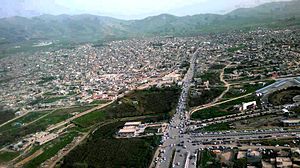
Ansar al-Islam in Kurdistan, simply called Ansar al-Islam, is a Kurdish Islamist militant and separatist group. It was established in northern Iraq around the Kurdistan Region by Kurdish Islamists who were former Taliban and former Al-Qaeda volunteers, which were coming back from Afghanistan in 2001 after the Fall of Kabul. Its motive is to establish an Islamic state around the Kurdistan region and to protect Kurdish people from other armed insurgent groups. It imposed strict Sharia in villages it controlled around Byara near the Iranian border.

The United States-led invasion of the Republic of Iraq was the first stage of the Iraq War. The invasion began on 19 March 2003 and lasted just over one month, including 26 days of major combat operations, in which a combined force of troops from the United States, the United Kingdom, Australia and Poland invaded Iraq. Twenty-two days after the first day of the invasion, the capital city of Baghdad was captured by coalition forces on 9 April after the six-day-long Battle of Baghdad. This early stage of the war formally ended on 1 May when U.S. President George W. Bush declared the "end of major combat operations" in his Mission Accomplished speech, after which the Coalition Provisional Authority (CPA) was established as the first of several successive transitional governments leading up to the first Iraqi parliamentary election in January 2005. U.S. military forces later remained in Iraq until the withdrawal in 2011.
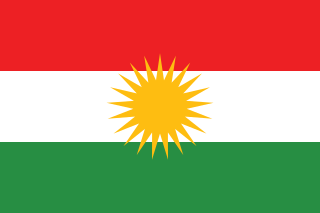
The Peshmerga comprise the standing military of Kurdistan Region, an autonomous political entity within the Republic of Iraq. According to the Constitution of Iraq, the Peshmerga and their security subsidiaries are solely responsible for the security of Kurdistan Region, chiefly due to the fact that the Iraqi Armed Forces are forbidden to enter Iraqi Kurdistan. These subsidiaries include Asayish, Parastin û Zanyarî, and Zêrevanî. The Peshmerga's history dates back to the 18th century, when they began as a strictly tribal pseudo-military border guard under the Ottoman Turks and the Safavid Iranians. By the 19th century, they had evolved into a disciplined and well-trained guerrilla force.
Events in the year 2002 in Iraq.
The Battle of Debecka Pass on 6–7 April 2003, sometimes known as the Battle of Debecka Ridge or Debecka Crossroads, or otherwise referred to as the Alamo of the Iraq War, was a successful operation launched by U.S. Special Forces to secure a major crossroads near the village of Debecka, between Mosul and Kirkuk in northern Iraq. It was notable for its use of the Raytheon/Lockheed-Martin Javelin anti-tank missile. The weapon demonstrated how lethal and crucial technology can be in determining the outcome of a battle. The light unarmored SOF and Peshmerga (KDP) force faced a mechanized force of Iraqi infantry and tanks. The US and KPD force was able to defeat the Iraqi mechanized infantry & tank force with combined air-to-ground strikes, superior maneuvering, and the use of the Javelin missiles.

The 10th Special Forces Group (Airborne) (10th SFG (A), or 10th Group) is an active duty United States Army Special Forces (SF) Group. 10th Group is designed to deploy and execute nine doctrinal missions: unconventional warfare (UW), foreign internal defense (FID), direct action (DA), counterinsurgency, special reconnaissance, counterterrorism, information operations, counter-proliferation of weapon of mass destruction, and security force assistance. 10th Group is responsible for operations within the EUCOM area of responsibility, as part of Special Operations Command Europe (SOCEUR).

Combined Joint Special Operations Task Force – North (CJSOTF–N), also known as Task Force Viking, was the U.S. joint task force responsible for the northern front during the initial period of the 2003 U.S. invasion of Iraq. It secured Kirkuk, Mosul, and the northern oil fields; prevented 13 Iraqi Army divisions from defending Baghdad or reinforcing defensive operations against American and British troops advancing in the south, and thwarted Turkish efforts to subvert Kurdistan.

From 2001 to 2003, there was a military conflict in Iraqi Kurdistan between the Islamist militant group Ansar al-Islam and its allies against the Kurdistan Regional Government (KRG). The conflict began in 2001 as an insurgency, but subsequently merged with the larger 2003 invasion of Iraq after Operation Viking Hammer. After the invasion, Ansar al-Islam moved southwards to participate in the Iraqi insurgency and, after it was quelled, the Syrian civil war.

The Iraqi–Kurdish conflict consists of a series of wars, rebellions and disputes by the Kurds against the central authority of Iraq starting in the 20th century shortly after the defeat of the Ottoman Empire in World War I. Some put the marking point of the conflict beginning to the attempt by Mahmud Barzanji to establish an independent Kingdom of Kurdistan, while others relate to the conflict as only the post-1961 insurrection by the Barzanis. Since the US-led invasion of Iraq and the subsequent adoption of federalism and the recognition of the Kurdistan Region (KRI) as a federal entity in the new Iraqi constitution, the number and scope of armed clashes between the central government of Iraq and the Kurds have significantly decreased. In spite of that, however, there are still outstanding issues that continue to cause strife such as the disputed territories of northern Iraq and rights to export oil and gas, leading to occasional disputes and armed clashes. In September 2023, following a series of punitive measures by the central government in Iraq against KRI, Masrour Barzani sent a letter to the President of the United States expressing concerns about a possible collapse of the Kurdistan Region, and calling for the United States to intervene.
The Battle of Zumar was fought between the Islamic State of Iraq and the Levant and Kurdish Peshmerga troops over the city of Zumar in Nineveh province in northern Iraq. It started when IS launched an offensive on Zummar from 1–4 August 2014, resulting in its capture. On 25 October, after US airstrikes, Kurdish Peshmerga troops succeeded in recapturing the city, after an unsuccessful attempt to hold it in September.
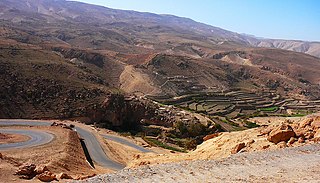
The Sinjar massacre marked the beginning of the genocide of Yazidis by ISIL, the killing and abduction of thousands of Yazidi men, women and children. It took place in August 2014 in Sinjar city and Sinjar District in Iraq's Nineveh Governorate and was perpetrated by the Islamic State of Iraq and the Levant (ISIL). The massacre began with ISIL attacking and capturing Sinjar and neighboring towns on 3 August, during its Northern Iraq offensive.
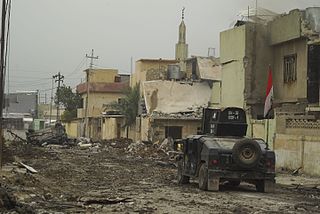
The War in Iraq was an armed conflict between Iraq and its allies and the Islamic State. Following December 2013, the insurgency escalated into full-scale guerrilla warfare following clashes in the cities of Ramadi and Fallujah in parts of western Iraq, and culminated in the Islamic State offensive into Iraq in June 2014, which lead to the capture of the cities of Mosul, Tikrit and other cities in western and northern Iraq by the Islamic State. Between 4–9 June 2014, the city of Mosul was attacked and later fell; following this, Prime Minister Nuri al-Maliki called for a national state of emergency on 10 June. However, despite the security crisis, Iraq's parliament did not allow Maliki to declare a state of emergency; many legislators boycotted the session because they opposed expanding the prime minister's powers. Ali Ghaidan, a former military commander in Mosul, accused al-Maliki of being the one who issued the order to withdraw from the city of Mosul. At its height, ISIL held 56,000 square kilometers of Iraqi territory, containing 4.5 million citizens.
Between 1 and 15 August 2014, the Islamic State of Iraq and the Levant (ISIL) expanded territory in northern Iraq under their control. In the region north and west from Mosul, the Islamic State conquered Zumar, Sinjar, Wana, Mosul Dam, Qaraqosh, Tel Keppe, Batnaya and Kocho, and in the region south and east of Mosul the towns Bakhdida, Karamlish, Bartella and Makhmour
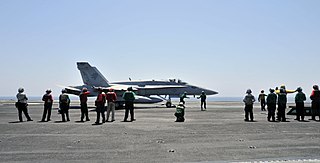
On 15 June 2014, U.S. President Barack Obama ordered United States forces to be dispatched in response to the Northern Iraq offensive of the Islamic State (IS) as part of Operation Inherent Resolve. At the invitation of the Iraqi government, American troops went to assess Iraqi forces and the threat posed by ISIL.

The Sinjar offensive was a combination of operations of Kurdish Peshmerga, PKK and People's Protection Units forces in December 2014, to recapture regions formerly lost to the Islamic State of Iraq and the Levant in their August offensive.
The Peshmerga have historically been Kurdish guerrilla forces combating the ruling power in the region of what is now Iraqi Kurdistan. Under Mahmud Barzanji, the Peshmerga fought against the British Empire after World War I. They also spearheaded revolts against the Iraqi government in 1931–1932 and against Iran in 1946–1947. Under the leadership of Mustafa Barzani, Peshmerga forces fought the Iraqi government in the First and Second Iraqi–Kurdish Wars of the 1960s and 1970s, and supported Iran in the Iran–Iraq War of the 1980s. The Peshmerga became divided between forces loyal to the Kurdistan Democratic Party (KDP) and those loyal to the Patriotic Union of Kurdistan (PUK), a split that led to the Iraqi Kurdish Civil War of 1995–1998. After the 2003 invasion of Iraq, the Peshmerga became the official military forces of the Kurdistan Region, ruled by a KDP-PUK coalition. The Peshmerga have played an important role in re-taking territory occupied by Islamic State of Iraq and the Levant.
The Kurdistan Region Security Council or KRSC is a high-level national security council in Kurdistan Region of Iraq.

The November Sinjar offensive was a combination of operations of Kurdish Peshmerga, PKK, and Yezidi Kurd militias in November 2015, to recapture the city of Sinjar from the Islamic State of Iraq and the Levant. It resulted in a decisive victory for the Kurdish forces, who expelled the ISIL militants from Sinjar and regained control of Highway 47, which until then had served as the major supply route between the ISIL strongholds of Raqqa and Mosul.
The Nineveh Plains offensive was a battle in which the Islamic State of Iraq and the Levant (ISIL) mounted a multi-front attack against Peshmerga forces in the area north and east of Mosul, in December 2015. The attack—the most significant ISIL military operation in the area in months, was successfully repelled by the Kurdish forces and was followed by a coalition air counter-offensive.

The Islamic Emirate of Byara was a short-lived unrecognized Kurdish Islamic state located in the Halabja Governorate ruled by sharia law which declared independence from Iraq in 2001. It collapsed after the United States with the support of the Peshmerga launched Operation Viking Hammer in 2003.
